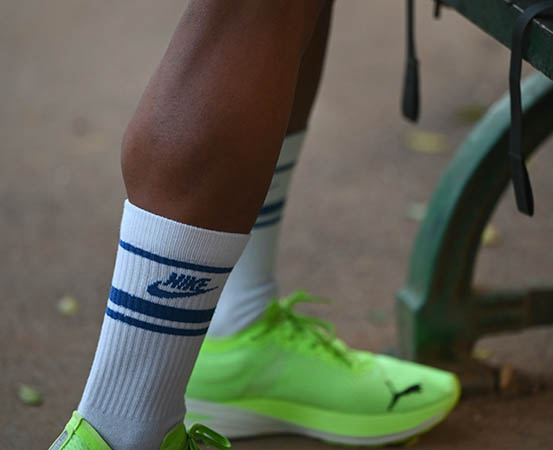
The calf muscles are very crucial for us–from enabling movement, providing stability to the ankle and foot, and supporting the body, they keep the body erect and steady while standing. The calf muscles empower us for activities such as running, playing sports, or even brisk walking. Since the group of muscles that constitute the calves are constantly in use, they are prone to repetitive strains. Calf muscle strains are common among those who are physically active, be it athletes, a hobby runner, or a weekend sports warrior.
However, calf strains are not limited to sportspersons alone. Strains can happen while performing daily activities too, while taking the stairs, or walking to the bus station, or even while making sudden leg movements that put undue load on the muscles.
Calf muscle strains
If one feels pain on the rear side of the leg, between the knees and the ankle, especially after doing a strenuous activity (sports/exercises/physical activity) it could be an injury, most often a calf muscle strain.
“Calf muscle strain leads to inflammation, which includes increased temperature, pain, swelling and reduced or loss of function,” says Dr Vivekanand Upadhyay, head of Indian Army Sports Medicine Centre at Hyderabad. “The pain felt can be severe or a light pain caused due to overexertion of the calf muscles.”
Types and grades of calf muscle strains
While some of the calf muscle strains can be chronic, most of them will be of acute nature. A sudden sprint, or an unexpectedly hard kick of the football can lead to acute strains. Sometimes the calf muscle strains become chronic, mainly due to improper rest or the grade of the strain. The pain that is mild initially may become severe at a later stage leading to the loss of muscle function in some cases.
Calf muscle strains are of three different grades depending on the extent of injury.
“The grade one, or the minor injuries, are the ones in which there has been no significant muscle tear and hardly any amount of intramuscular bleeding,” says Dr Upadhyay. “The slightly more severe or grade two strains are the ones in which there is a small amount of tear. One can also get slight swelling due to intramuscular bleeding. The grade three calf muscle strains are the ones which are much more serious because of an almost complete tear in the muscle resulting in a significant loss of function and the individual might also find it difficult to move.”
Treatment for calf strains
Treatment begins by assessing the grade of the calf strain.
“The protocol that can be used involves providing sufficient rest for the strained calf muscle, followed by icing, compression [wrapping it with a bandage]and elevation or raising the leg. Avoiding any form of heating and rubbing or movement at the site of strain in the first 72 hours is necessary,” says Dr Upadhyay.
The process of rehabilitation and getting back to doing sports or even making sure that the muscle is functioning to its maximum will take time depending upon the grade of the injury.
“The healing process has five stages,” says Dr Upadhyay. “The first stage is where one provides the basic protection to the injured calf muscle. The second involves slow movement of the strained muscle. In the third stage there is slow build-up of the muscle power, strength, and endurance while the fourth stage is about building the muscle coordination. Finally, the last stage involves returning to the sport.”
Role of rest and analgesics in calf strains
It is crucial to take rest when one gets a calf muscle strain or any sports injury, for that matter. Do not try to rush back into playing or try to speed up the recovery process by taking excessive analgesics.
“One must avoid excessive use of analgesics. In fact, if possible, it is better to not take analgesics,” suggests Dr Upadhyay.
Analgesics provide relief from pain. But excess use also reduces the inflammation associated with the healing of the injury and slows down the healing process. Since pain killers suppress the pain, one is likely to believe that the injury is healed and will return to doing sports even before the healing process is complete. This could make the injury worse and exacerbate the pain.
Takeaways
- Calf muscle strains happen due to overuse of the calf muscles present on the backside of the leg, between the knees and the ankle.
- The symptoms include increased temperature, pain and swelling with reduced or loss of function of the strained muscle.
- The treatment process involves providing sufficient rest for the strained calf muscle, icing, compression, and elevation or raising the leg.

















